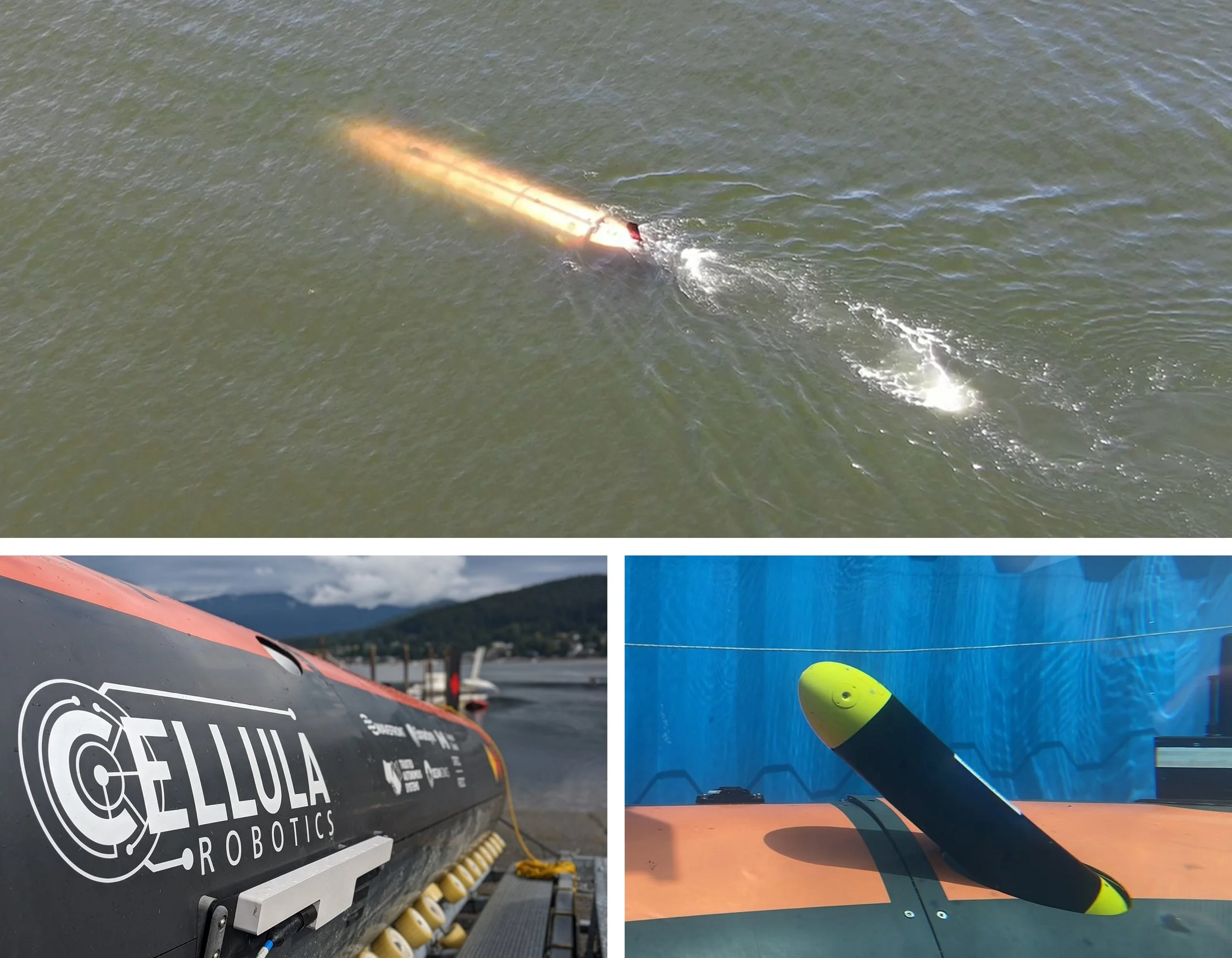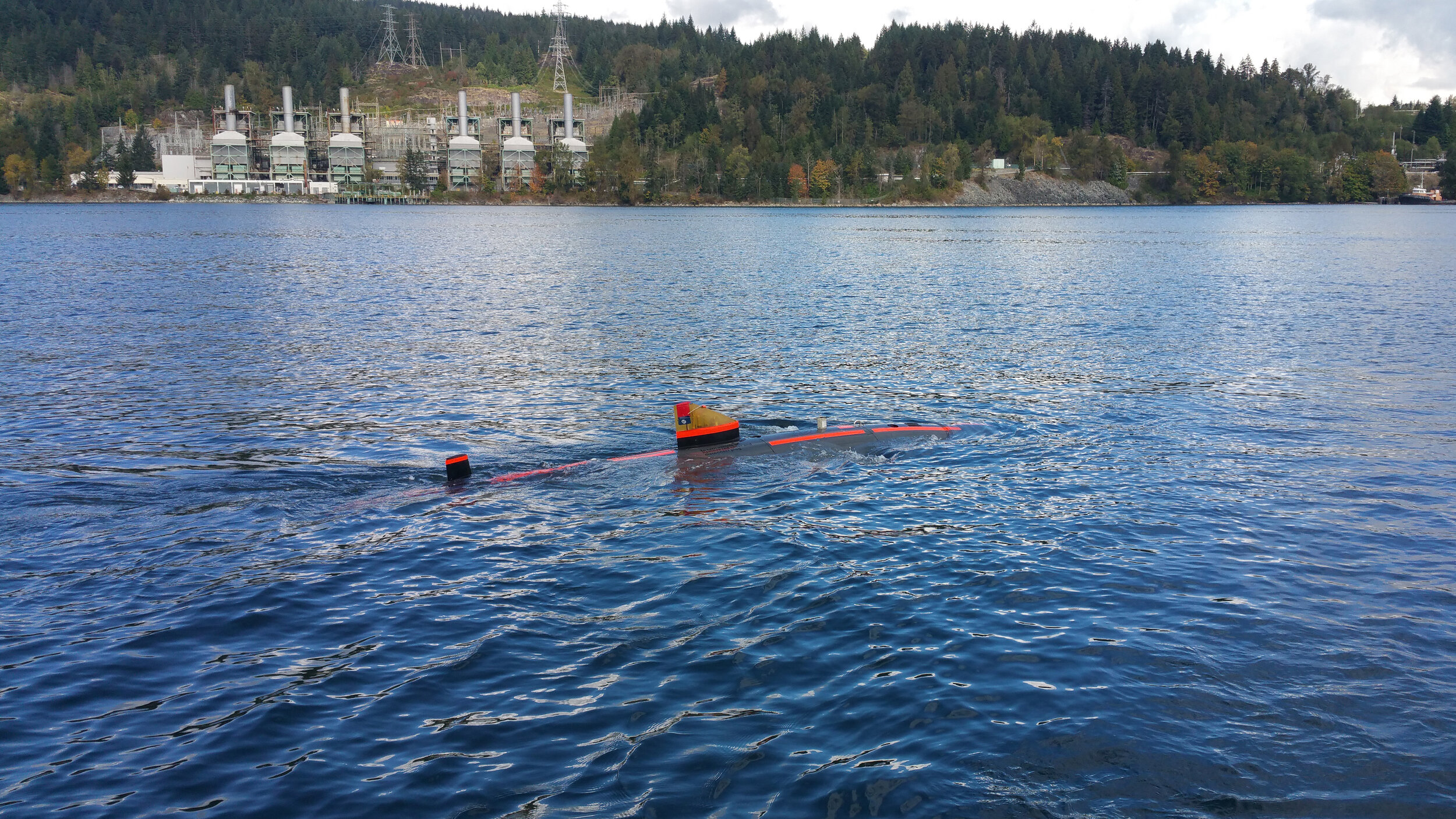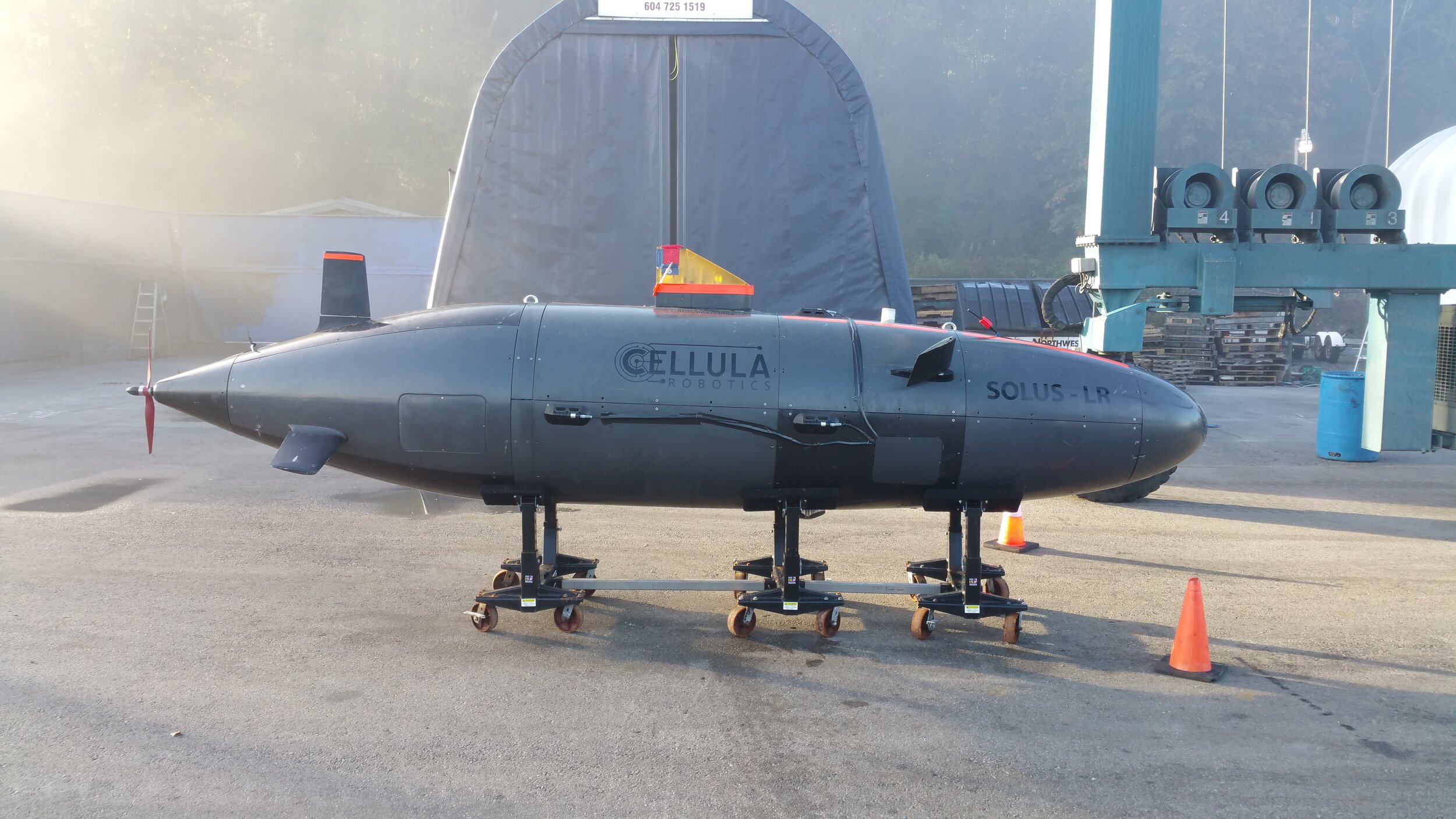Cellula's Solus-XR XLUUV undergoes its inaugural sea trials off the shores of West Vancouver, BC on August 29th, 2023.
Cellula Robotics Ltd. proudly announces a monumental moment in a project that commenced in early 2023, showcasing the company's dedication to advancing Extra Large Unmanned Underwater Vehicles (XLUUVs). The Solus-XR XLUUV has officially embarked on its highly anticipated sea trials, signifying a crucial stride in the company’s development of its long range hydrogen fuel cell powered autonomous underwater systems.
“This momentous achievement is a testament to Cellula’s enduring commitment to innovation and excellence.” Said Adrian Woodroffe, Director of Business Development at Cellula. “Through strategic partnerships and tireless dedication, the company has transformed a vision into reality with the development of the Solus-XR XLUUV, a cutting-edge testament to the future of maritime security.”
Building upon the foundation of Cellula's preceding innovation, Solus-LR, the remarkable Solus-XR XLUUV has been meticulously crafted to attain unparalleled operational ranges, reaching an impressive 5,000 kilometers. Through its port-to-port mission capability, Solus-XR removes the necessity for auxiliary support vessels, thus facilitating access to challenging and remote locations frequently encountered in Arctic sub-ice missions. Beyond the elimination of environmentally taxing high-emission support vessels, the cutting-edge hydrogen fuel cell technology developed by Cellula empowers the system to engage in sustainable operations, ensuring minimal ecological footprint.
The initial sea trials are designed to evaluate surface performance and autonomy, offering a valuable opportunity to assess the vehicle's capabilities in the dynamic context of real-world maritime conditions.
Looking ahead, Cellula Robotics Ltd has planned demonstration missions for 2024, a pivotal step in showcasing the full spectrum of the Solus-XR XLUUV's capabilities in real-world scenarios. These missions will underscore the vehicle's potential to redefine underwater security and operations, solidifying its place as a game-changing technology.
Further bolstering its achievements, the Solus-XR XLUUV proudly claims the title of the largest UUV ever developed in Canada. This accomplishment underscores the nation's capacity to drive innovation and lead in the development of cutting-edge underwater technology.
As Cellula Robotics Ltd pushes the boundaries of innovation, the sea trials of the Solus-XR XLUUV mark a defining moment in the company's journey, demonstrating its commitment to excellence and setting the stage for a new era of XLUUVs.









![FullVehicle_P1470575.MP4_snapshot_07.17_[2021.02.01_14.37.19].jpg](https://images.squarespace-cdn.com/content/v1/591b4a93725e254bd9bea803/1620069964602-22MSSTC7ZV4VY9KL3VH4/FullVehicle_P1470575.MP4_snapshot_07.17_%5B2021.02.01_14.37.19%5D.jpg)

